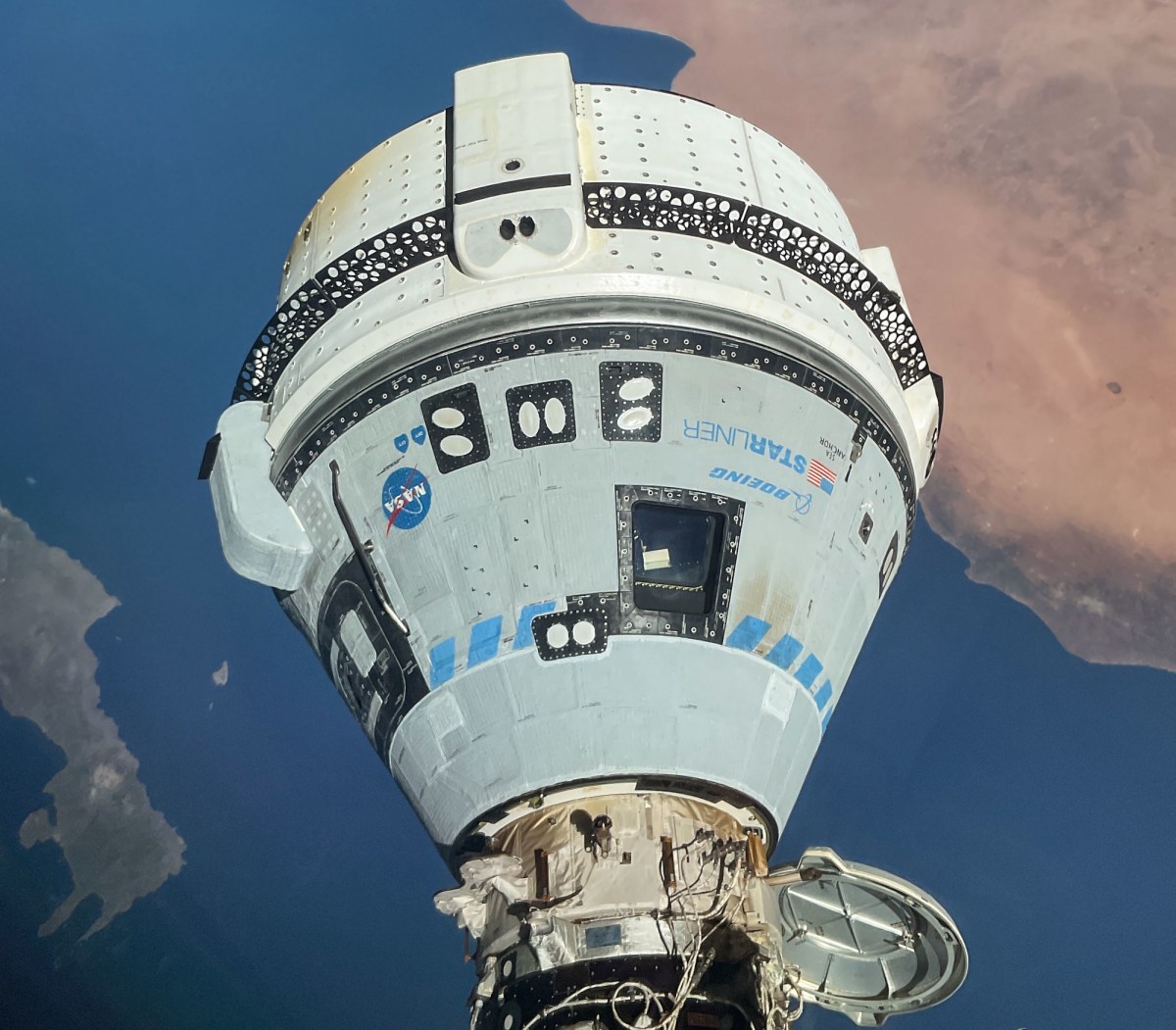TOKYO — NASA and Boeing say it may be the end of July before they’re ready to return the CST-100 Starliner spacecraft from the International Space Station as they continue thruster tests.
At a July 10 briefing, officials said ongoing ground tests of the spacecraft’s reaction control system (RCS) thrusters at NASA’s White Sands Test Facility in New Mexico had failed to replicate the conditions experienced by the thrusters that caused five of them to be shut down by the spacecraft’s computer during the spacecraft’s approach to the station June 6. Four of the five were restored to allow the docking to proceed.
“The temperatures we have been able to achieve are not quite what we would have hoped for based on the flight data,” said Steve Stich, NASA commercial crew program manager. He said engineers used heaters to try to replicate the thermal conditions experienced by the thrusters from the firing itself as well as exposure to the sun.
He said the structures on the Starliner service module called “doghouses” that host the thrusters may retain more heat than previously thought. Engineers are studying whether additional tests may be needed before turning their attention to modeling the thruster performance for the spacecraft’s departure. The RCS thrusters are not used as heavily for departing the station and deorbiting, with the actual deorbit burn done by separate, larger thrusters.
He emphasized that while Starliner can safely return home its crew of NASA astronauts Butch Wilmore and Suni Williams now in the event of an emergency, they want to wait until the ground tests and work is complete before wrapping up the Crew Flight Test (CFT) mission. “We’re going to work methodically through our process,” he said, “before we give the go to proceed towards undocking and landing.”
Mark Nappi, Boeing vice president and commercial crew program manager, said engineers are working on a “little bit over 30” actions linked to both the thruster problems and helium leaks, of which more than half have been completed. All of them are scheduled to be wrapped up by the end of next week.
That work includes additional tests of flanges and seals in the propulsion system to understand the cause of helium leaks. Nappi said at one point some seals might be “undersized” and would need to be replaced on the thrusters that would be used on the next Starliner mission. Later in the call, though, he walked back that characterization.
“The initial analysis of that said that the design should have been sufficient, but there’s obviously something going on in that cavity that we don’t understand,” he said, such as foreign object debris or excess grease preventing the seal from working as designed. He added the design itself could be “slightly marginal” and could be affected by heating or other factors.
The schedule for wrapping up the CFT mission will depend on that engineering work as well as the schedule for the next crew rotation mission, Crew-9, scheduled to launch in mid-August on a SpaceX Crew Dragon. Starliner would need to depart by then to free up the docking port for Crew-9.
“A few days before that launch opportunity we would need to get Butch and Suni home on Starliner,” Stich said of Crew-9. “We’re really working to try to follow the data and see when is the earliest we could target for undock and landing. I think some of the data suggests, optimistically, it’s by the end of July.”
Later in the call, he did not rule out extending Starliner’s stay by doing an “indirect handover” where the Crew-8 Crew Dragon departs before the Crew-9 mission launches, rather than the preferred approach of having the two crews overlap on the station for several days.
Shortly before that update on the CFT mission, Williams and Wilmore spoke briefly with reporters from the ISS. Wilmore said there that he could tell the performance of the RCS thrusters was “degraded” during the approach to the station but otherwise praised the overall performance of Starliner.
“We’re absolutely confident” that Starliner can bring them home safely, he said, a view that Williams echoed.
Williams added they were making the most of their extra time on the station, integrating into the rest of the crew and carrying out experiments and maintenance work. “I’m not complaining, Butch isn’t complaining, that we’re here for a couple extra weeks,” she said
They stopped short, though, of endorsing Starliner for missions after CFT. “There have been multiple issues with every spacecraft that has ever been designed,” Wilmore said. “We trust that the tests that we’re doing are the tests we need to do to get the right answers to give us the data that we need to come back.”
